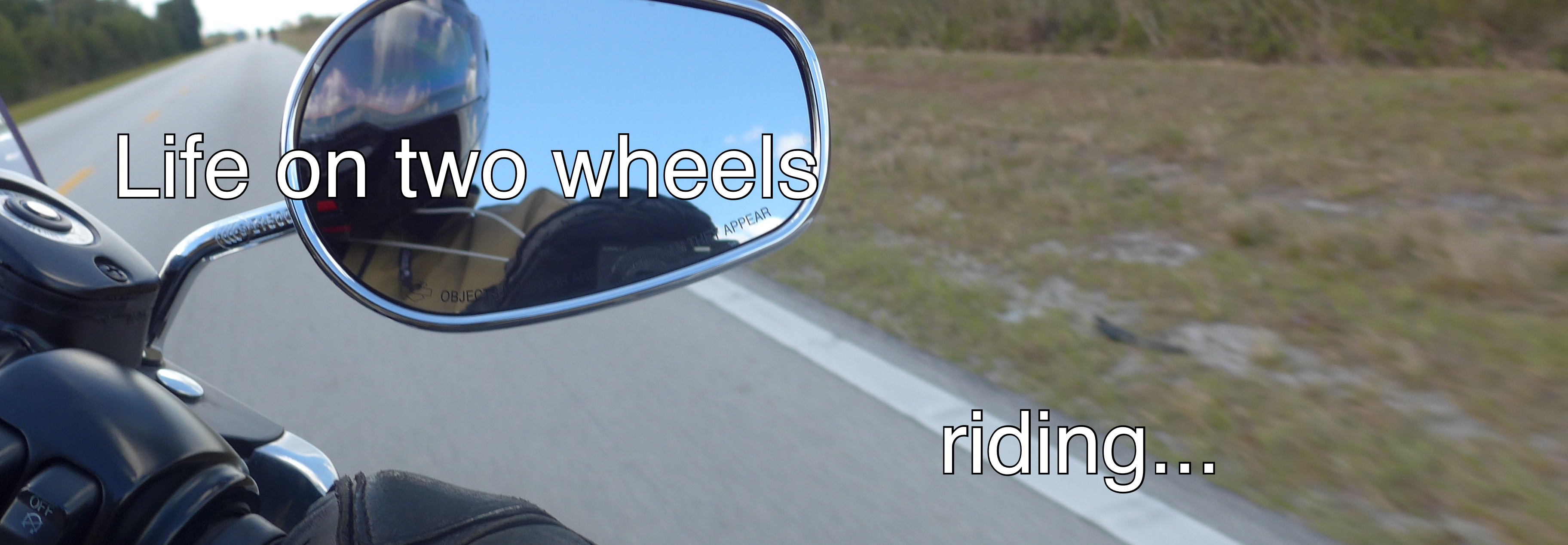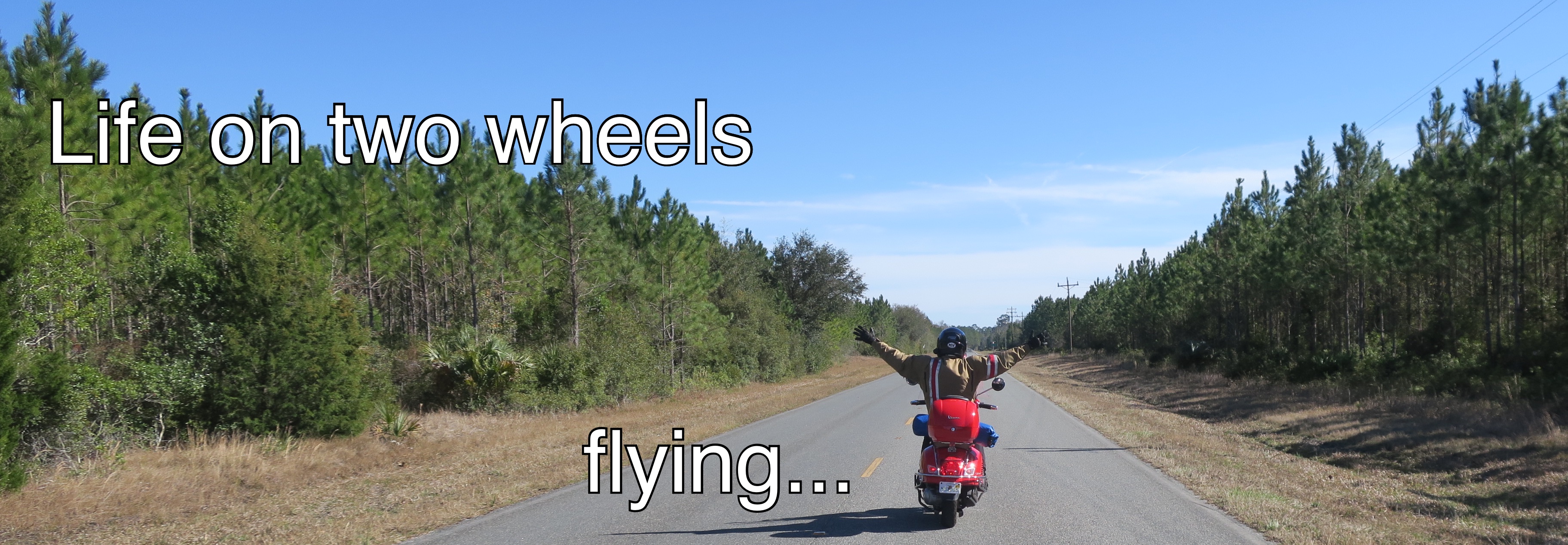A road trip from Montreal to Ottawa and back. On my Vespa. I've included a Google Earth view of the trip, mainly because I couldn't figure out how to embed a complete Google map view. I've now figured out that the trip was so long that the result is actually seven Google map segments. There are so many that I've added them to the end of this post.
8 1/2 hours (9:30 a.m to 6:00 p.m.); 375 kilometres, 233 miles; one more province added to the places I've ridden; one $3.00 ferry trip; 6 or 7 bridges; three pit stops to top up with gas; one chat with a fellow rider on a big Beemer who couldn't quite believe a guy on a small-frame Vespa was pacing him; one stop for a bite to eat; one massive traffic jam in Gatineau due to road work; one hour spent visiting my dad; one rush hour in Ottawa; two dozen or so bugs obliterated on my visor; three sets of disposable ear plugs; 75 kms on the Trans-Canada Highway with the throttle twisted to the stop, too few pictures to share, and one numb bum.
That's it for the ride stats.
What did I learn?
Long distance riding is tough. Really tough. The Vespa's gas tank is not designed for long distances. Nor is the saddle or seating position for that matter. 150 cubic centimeters is 100 or so cubic centimeters short for pacing traffic on a straight, two-lane, 90 km/h highway. A mid-height windscreen and a Nolan N-102 helmet is a combination that is WAY TOO LOUD for comfort, even with 32db noise canceling ear plugs.
The sweet spot for the Vespa LX 150 is urban riding. That's where the Vespa really shines. It's fun to ride; it's incredibly nimble; it hauls an incredible range of stuff so it's great for shopping; it can filter through traffic jams like a ghost through walls; you can park it anywhere; it turns heads because it's gorgeous; and the urban riding list goes on, and on.
Which is not to say I didn't have fun on this trip.
The absolute best was a stretch of highway 148 along the Ottawa river in Quebec. It was twisty with good pavement and a speed limit of 80 km/h. Traffic was doing just under 100 km/h. With the throttle wide open, the bike just ate up those sweeping turns. I felt like I was one with the machine, counter steering with just the right pressure on the handle bars, leaning first this way, then that. It was just fantastic.
I also appreciated the elderly gentleman who came up to me after my bite to eat at a roadside hotdog stand, to ask about the Vespa and whether it was made in Italy. He explained to me that the wheels were small because they originally were recycled aircraft landing gear. And I believe he is right.
Crossing from Ile Bizard to Laval on the cable ferry was fun. I hadn't taken that ferry in years.
I also enjoyed stopping at the church in St-Eustache. During the 1837 rebellion the British army laid siege to the church where some of the rebels had taken refuge. You can still see where the wall is pocked by cannon fire. When I was a kid, my mother used to point out a cannon ball that had remained lodged in the wall. That bit must have been repaired at some point, or the cannon ball was dislodged, because it's no longer there.
Visiting my Dad was the reason I went to Ottawa. He loves jackets, so he just had to model my armored BMW Airflow.
Relief from that misery came when Highway 17 merged with 417 which is the Trans-Canada Highway. For some reason the slight head wind went away and I was able to average about 100 km/h. With traffic able to pass me in the other lane it was actually much more comfortable. It also helped that the opposing traffic on the west bound lanes was on the far side of the very wide median instead of being in the lane right next to me.
Between the 17 and the 417, the return trip ended up being a wide-open-throttle affair pretty much all the way. To be honest I was getting concerned about the impact on the Vespa's 150cc Leader engine. The good news is that after I turned off the motor when I stopped to gas up for the last leg home, the bike started right up without a fuss after the five minute respite.
Would I do it again?
375 kilometers is a lot of ground to cover with any vehicle, let alone a Vespa. And yet, if you look at the links on the right of the page, you'll find many accounts of cross continental trips on Vespa LX 150s, and even on 50cc bikes. I was always impressed with those exploits. Now with my own experience, I am in awe of those incredible trips. Any thought I might have had that I could go coast to coast on my Vespa is receding pretty quickly from my mind.
I might try another long trip if I upgrade to a GTS though. The larger motor would have eliminated the anxiety of not being able pace the traffic.
And before any longish trips are planned, I need to rethink my gear. I need to get a new windscreen and cut it only slightly down so I can see over it and eliminate the noisy turbulence. I also need a much quieter helmet. Not having to contend with that drumming in my ears for hours on end would also have made a huge difference.
Here are those Google maps. The route I took is indicated by the blue trail on the map. There appears to be some kind of a bug with the embedding code, and the route may not be visible on the thumbnail of the map. Scrolling around, or zooming out will reveal the route. I include these maps in the interest of completeness, in case anyone wants a more detailed closer look at the trip.
Flash forward: The Vespa LX 150 was my first Vespa. In 2013 I stepped up to a Vespa GTS 300 i.e. and in July of 2013 managed an epic tour through the northeast. Click here or on the 'Touring' link above, to learn more.
View Ottawa-trip in a larger map
View Ottawa-trip in a larger map
View Ottawa-trip in a larger map
View Ottawa-trip in a larger map
View Ottawa-trip in a larger map
View Ottawa-trip in a larger map
View Ottawa-trip in a larger map
















